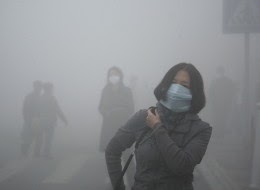Over the past couple of days, the island nation of The Philippines has suffered what many are calling the worst typhoon in the recorded history of mankind, Super Typhoon Haiyan.
The storm hit land in the upper northern half of the nation, made up of 7,107 islands in the Pacific Ring of fire, due south of China, and directly north of Indonesia, two days ago, with heavy rains and winds in excess of 200 mph. Much of the region has already suffered calamity this year in the way of other typhoons, flooding, and even earthquakes. The region certainly was in no condition to be hit by another natural disaster, but mother nature has proven that she does not discriminate.
According to reports, the first Red Cross volunteers from the U.S. have begun arriving in the capital city of Manila, and more than 1,200 people are feared dead. However, true casualties in Philippine storms are never truly known and are always much higher than estimates claim.
Much of the country is populated by squatters who live in over-populated shanty villages, in which accurate populations are hard to account for, as are accurate accounts of how many people go missing at times like these. Many of the squatter villages are built along the banks of streams for better access to water sources, and entire villages have often been swept away in the dead of night during flash floods. The nation sits barely above sea level, and when it rains hard, as is the case when typhoons roll in, there is simply no place for the water to go, and it often rises faster than people can send an alarm, or even be awakened.
Gwendolyn Pang, Philippine Red Cross secretary general, said her organization estimated 1,200 people had died, while a UN official who visited Leyte described apocalyptic scenes from a Hollywood movie.
“This is destruction on a massive scale. There are cars thrown like tumbleweed and the streets are strewn with debris,” Sebastian Rhodes Stampa, a UN disaster management team member said. “The last time I saw something of this scale was in the aftermath of the Indian Ocean tsunami,” he continued, recalling the 2004 disaster that claimed nearly a quarter of a million lives in Indonesia.
It may be weeks before a more accurate number of casualties is known, if ever. Some initial reports circulating is that entire islands have vanished. With every island in the Philippines being heavily populated (total land mass of the entire country is only half the size of the U.S. state of Texas, yet there is a population of nearly 100 million), whatever number is finally determined, it is not going to be pleasant.




















